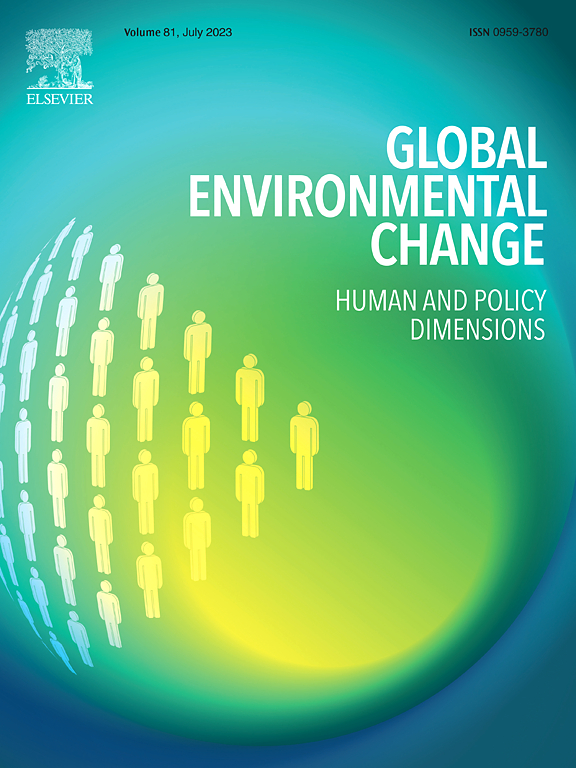Citizen science data can significantly improve predictions of potential ranges of non-charismatic species: a study on two freshwater sponges
IF 9.1
1区 环境科学与生态学
Q1 ENVIRONMENTAL SCIENCES
引用次数: 0
Abstract
Freshwater sponge species play crucial roles in aquatic ecosystems, yet their distribution patterns and responses to environmental changes remain insufficiently understood. Relying solely on platforms like GBIF for predicting species distribution may be inadequate and occasionally misleading due to biases and inaccuracies in the data. We investigated the distribution records and potential future distributions of two freshwater sponge species, Spongilla lacustris and Ephydatia fluviatilis, across Europe. Using various data sources, including the Global Biodiversity Information Facility (GBIF), literature records, and internet naturalist data (iEcology), we compiled a comprehensive dataset comprising 1,330 records for S. lacustris and 9,854 records for E. fluviatilis. While GBIF records predominated in Western Europe, additional sources filled gaps in distribution records, particularly in Central and Eastern Europe. Species distribution models (SDMs) performed well, with S. lacustris exhibiting a broad climatic optimum range in Western and Northern Europe, while E. fluviatilis displayed a narrower range, primarily in northern regions. Future projections indicated a northward shift of freshwater sponge species in response to climate change, with potential contractions in Baltic Sea countries. These findings underscore that using diverse data sources such as scientific literature, field surveys, local ecological knowledge, and citizen science initiatives offers a more holistic view of species distribution patterns. Social media platforms also play a significant role in supplementing biodiversity data and engaging communities in conservation efforts.
公民科学数据可以显著提高对非魅力型物种潜在分布范围的预测:一项对两种淡水海绵的研究
淡水海绵物种在水生生态系统中发挥着至关重要的作用,但人们对其分布格局和对环境变化的响应却知之甚少。仅仅依靠GBIF这样的平台来预测物种分布可能是不够的,有时还会因为数据的偏差和不准确而产生误导。本文研究了两种淡水海绵物种——湖海绵和流海绵在欧洲的分布记录和潜在的未来分布。利用各种数据来源,包括全球生物多样性信息设施(GBIF)、文献记录和互联网自然学家数据(iEcology),我们编制了一个全面的数据集,其中包括湖泊沙蚕的1,330条记录和河流沙蚕的9,854条记录。虽然GBIF记录在西欧占主导地位,但其他来源填补了分布记录的空白,特别是在中欧和东欧。物种分布模型(SDMs)表现良好,湖螺在西欧和北欧表现出较宽的气候最佳范围,而河螺则表现出较窄的气候最佳范围,主要在北部地区。未来的预测表明,作为对气候变化的响应,淡水海绵物种将向北转移,波罗的海国家的淡水海绵物种可能会减少。这些发现强调,利用不同的数据来源,如科学文献、实地调查、当地生态知识和公民科学倡议,可以更全面地了解物种分布模式。社交媒体平台在补充生物多样性数据和吸引社区参与保护工作方面也发挥着重要作用。
本文章由计算机程序翻译,如有差异,请以英文原文为准。
求助全文
约1分钟内获得全文
求助全文
来源期刊

Global Environmental Change
环境科学-环境科学
CiteScore
18.20
自引率
2.20%
发文量
146
审稿时长
12 months
期刊介绍:
Global Environmental Change is a prestigious international journal that publishes articles of high quality, both theoretically and empirically rigorous. The journal aims to contribute to the understanding of global environmental change from the perspectives of human and policy dimensions. Specifically, it considers global environmental change as the result of processes occurring at the local level, but with wide-ranging impacts on various spatial, temporal, and socio-political scales.
In terms of content, the journal seeks articles with a strong social science component. This includes research that examines the societal drivers and consequences of environmental change, as well as social and policy processes that aim to address these challenges. While the journal covers a broad range of topics, including biodiversity and ecosystem services, climate, coasts, food systems, land use and land cover, oceans, urban areas, and water resources, it also welcomes contributions that investigate the drivers, consequences, and management of other areas affected by environmental change.
Overall, Global Environmental Change encourages research that deepens our understanding of the complex interactions between human activities and the environment, with the goal of informing policy and decision-making.
 求助内容:
求助内容: 应助结果提醒方式:
应助结果提醒方式:


